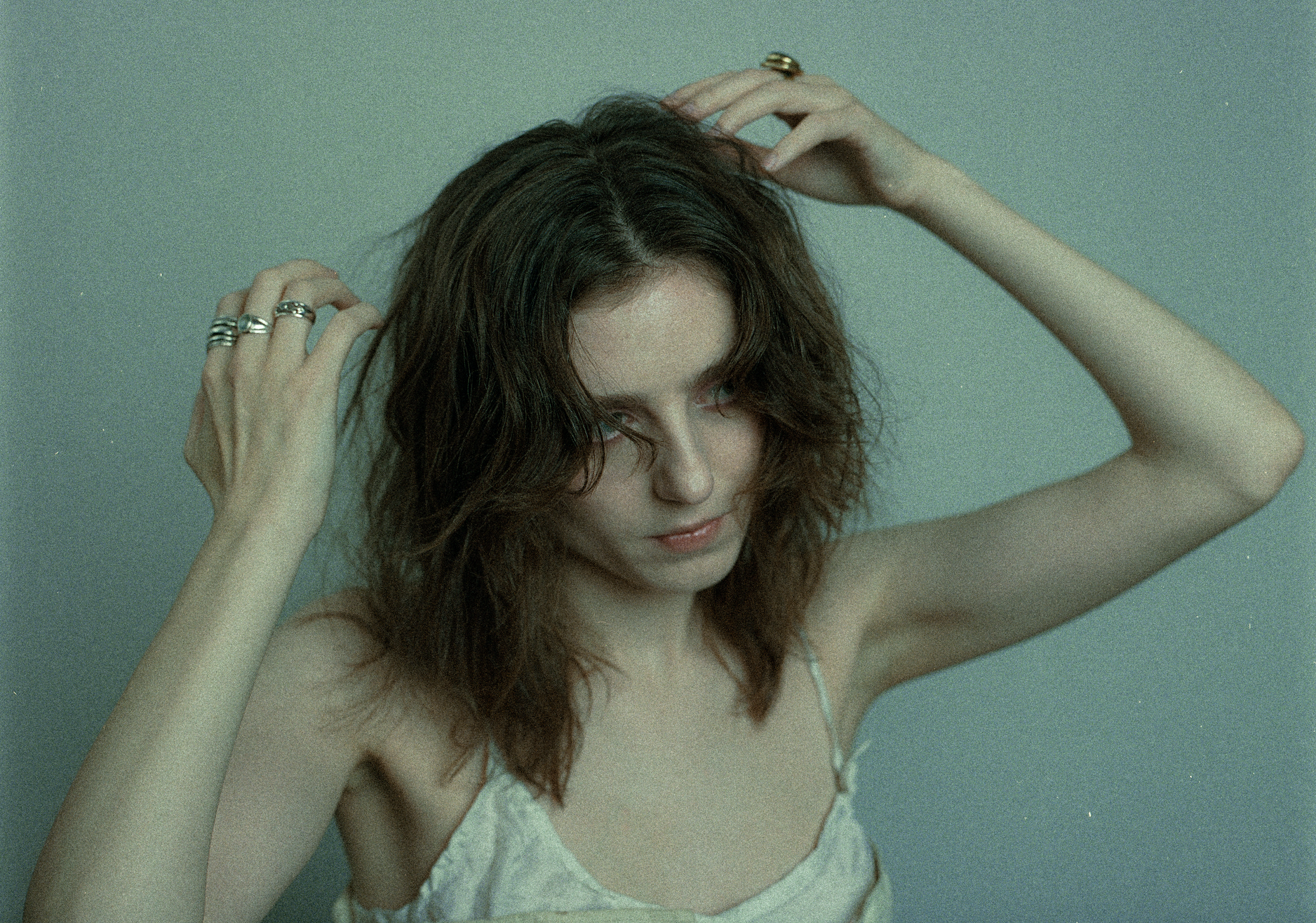Foto-© Thibault Theodore
Wir unterhielten uns mit Birdy über ihr neues und damit bereits fünftes Album Portraits. Portraits ist ein energiegeladenes und elektronisches Werk, was Birdy als bewusste Reaktion auf die fünfjährige Entstehungszeit ihres vorherigen Albums beschreibt. In unserem Gespräch redet Birdy über neu gefundenes Selbstvertrauen in ihre künstlerische Vision, ihre Inspiration durch visuelle Einflüsse, die Zusammenarbeit mit vertrauten Kollegen und Freunden sowie die Freiheit, neue kreative Prozesse auszuprobieren:
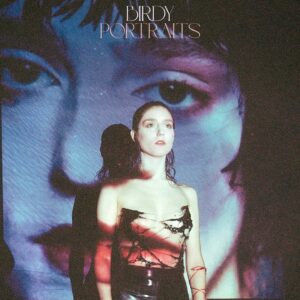 It’s lovely to speak with you again. Maybe because time is such a blur these days it doesn’t feel too long since we met for the release of Young Hearts. How did the relatively quick writing and recording process impact the overall creative energy and direction of your new album, Portraits?
It’s lovely to speak with you again. Maybe because time is such a blur these days it doesn’t feel too long since we met for the release of Young Hearts. How did the relatively quick writing and recording process impact the overall creative energy and direction of your new album, Portraits?
I think that that has actually been a part of just the way it feels. There’s a lot of energy in it and it’s quite electronic and it’s very different compared to the folk sound of Young Heart. Young Heart took five years to make and I thought I can’t do that again. So I just wanted to make something with lots of energy that was fun.
Portraits can be realistic and capture someone’s essence quite precisely, or they can be more stylistic and abstract. Which direction did you want to take with the album?
When I first started writing for the album, I was inspired more visually. By PJ Harvey and Portishead and Kate Bush a little bit later. It took on this grandeur feeling, Victorian or Dickensian even. I then got inspired by lots of 80s artists. But it was all very visual and I wanted it to be quite dark and brooding and that then filtered into the music as well. I’ve not really done it that way around before, it’s always been the music that led at first, but I got inspired by all these images. But the actual idea of the album has a lot to do with the inner child and looking into ourselves and how we grow and change and how the different people are coming in and out.
Can you share an example or a moment in life where you felt that change or how your perspective on things changed?
I was very young when I started putting out records and I used to be very hard on myself at that age just because, you just don’t really know who you are yet. I was often unsure of a lot of the things that I would put out and it’s only these last two records where I felt settled and like I really knew my vision and knew what I wanted the outcome to be more fully. I would often look back on things and think, why did I do that? Or, how did I do this? But now I can see that that was just me growing and learning and finding who I was and understanding what I like or don’t like. So I guess that’s changed in me. I feel more settled and accepting of who I am and who I was at the same time.
That’s beautiful to hear. You also mentioned feeling like the „kid in the room“ during past collaborations. How did you find and trust your voice?
I’ve always known in my gut when I don’t like something, but I guess it takes confidence and time to trust that. And it’s hard when you’re in a room with people older than you. You kind of just assume, well, they probably know better because they’re older. And that’s something that was nice on this record, I just felt like I was working with my peers and with friends and like we shared the experiences and have been through the same things. It used to be me as a 15 year old working with a man twice my age and there’s not much in common often. This time it felt like working with friends and it was so nice and very fun.
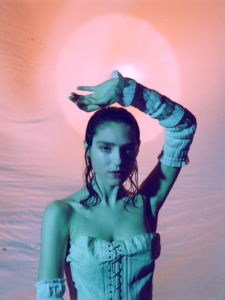 And I guess having people around you who you already trust and feel connected to on a different level creates a certain vulnerability or freedom to explore differently?
And I guess having people around you who you already trust and feel connected to on a different level creates a certain vulnerability or freedom to explore differently?
Yeah, it’s a different trust having a trust. And also I think on Young Heart, I was so lost at that time in my life anyway, but I ended up working with so many different people on that record. And I didn’t really want to do that on this one. I just wanted to have a group who understood where we were trying to get to and we could just keep working at it until we got the right things and that really helped and I really enjoyed that little kind of place. There’s only a few people in this album. I had Ed and Anya who I did a lot of songs with and my friend Gabe Simon from Nashville. And then Mark Crew and Dan Priddy and that was it really.
How would you describe the overall essence of portraits in five words, if that’s possible?
Oh that’s hard. I feel like there’s a freedom to it. Maybe that’s a bit cheesy, but I wanted that feeling of freedom. I also wanted the feeling of exercising a ghost. Then there’s something brave and in a way it feels like someone who’s kind of striking, which I like. And then I guess a visual thing would be like a gothic-ness. And I also saw a lot of purple in this record. Maybe that’s from being inspired by Kate Bush and Prince and I absorbed all the purpleness from them.
Portraits marks a departure from your previous records in terms of sound and production. There’s so much energy! Apart from working with a smaller group of friends and trusting your vision more, how did you approach the creative process differently this time around?
I didn’t play as much piano on this one when we were writing, although they all kind of actually work on the piano too which is nice. But I knew I would just end up writing another sad song on the piano. So I was exploring with synths a lot, which I’ve never really done and that was really fun. It changed the feeling immediately and I also started with the drums. Find a drum pattern that feels really exciting and then write to that. That’s the only way I could write something that was up tempo, starting that way. It felt quite freeing for me to do something different like that.

So do you think if you were to learn a new instrument next, the trumpet or something, and emerged yourself in that soundscape and let the words come from there, would a whole new Birdy sound arise?
I think so. Actually I mean there’s definitely different songs in different instruments and I remember when I started learning the guitar, so many different songs came to me. Because it’s just such a different energy, it’s much lighter and it’s rhythmic. There are so many different feelings in the different instruments and I definitely use it as a tool to be inspired.
Was there a breakthrough moment where you felt your vision for Portraits becoming clear?
Yes, actually, when I wrote the title track with Gabe. He was over in London, and it was the first time we’d met actually. I didn’t know what to write about that day and was feeling a bit stuck and he kind of asked me what I had been up to recently. And I said I’ve been painting portraits of people and he was really excited by that and came up with this line ‘portraits of you in my room’. And I love that. A lot of the record is about fantasy and falling in love with an idea of someone, and I felt like that’s kind of what I’d been doing in my painting. Falling in love with the painting rather than the person. And how you can change it to how you wish someone was or how you kind of imagine they are. I think that was the first song where I could see it all come together. And Gabe’s production as well. He was so fast and he created the soundscape and it felt really right and it was a mixture of electronic and acoustic and I was playing this beautiful piano and I loved the combination and the 80s 90s mixture feeling it had.
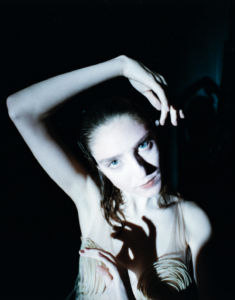 How do you balance the freedom to experiment with your music while maintaining your artistic identity?
How do you balance the freedom to experiment with your music while maintaining your artistic identity?
I think it’s not something I think about too much because it’s hard to be led by that when you’re writing. But what links them all is the emotion behind it, and probably the way I sing and that feeling like there’s a connection between them. And there’s always like an element of it being quite romantic sounding. I think even on this record, when you listen to it they’re actually all sad songs. I can’t get away from that. So yeah, I try not to worry about that and just hope people are excited to hear something a bit different and will recognise me in it.
You mentioned somewhere that sometimes you write about things before they happen. Has that changed your way of approaching songwriting in any way?
I’m always surprised. With songwriting I always kind of forget that this weird, witchy thing happens and then I’m always surprised by it. It must just be a subconscious thing and you kind of know how you feel deep down about something. I may write a song and it won’t even be a lyric coming out, it will just be music and then I kind of get the lyrics from what the music feels like. And then a few weeks later or a few months later I’ve written the story of something that’s happened.

I’ve seen you play in Munich not too long ago, actually. With my sister. And it was beautiful and it was so sweet to feel this excited little bubble surrounding the location. I noticed that there were so many phones out and a lot of people snapping away and recording. Does that ever become a distraction or get in the way between you and the crowd connecting?
It does sometimes. I mean, I kind of wish that it wasn’t a thing. But I’m also guilty of it as well and see why people want to do it. But there are funny moments in the show. I look down and start playing ‘People Help the People’ and I look up again and it’s just a wall of phones. And I’m like, where did that come from? But then you know, I understand it, for people who are coming, that’s a song that they probably first heard and that’s the moment they came to see and that they were excited about and maybe want to relive, I don’t know. I mean it would be nicer without, for sure. I think sometimes people should just film a little bit and then put it away, you know? But sometimes people just end up watching the gigs through their phone and I find that really strange.
Is there a song on the record that you are most excited for fans to hear?
There’s one called I wish I was a shooting star which is my favourite on the record. I did it with Gabe and we made it in Nashville. I just love the production on it because it’s quite nostalgic and inspired by the Pixies and David Bowie, and it’s got that feeling of shooting into space. I wrote it for someone who’s feeling invisible and it’s about them trying to break out and it’s a little bit angsty and I just really love it. It really moves me that one.
Did you spend a lot of time in Nashville as you were working on the album?
I did two trips out there and just worked with Gabe and stayed with him and his family. It’s really sweet and he has a wonderful studio.
I always wonder how the actual physical space one is finding themselves in affects something like an album, or if it doesn’t at all.
I think it does for sure. The past records have drawn a lot just from being away from home and me purposely putting myself in uncomfortable places just to kind of evoke those feelings. A lot of my writing was about being far from home and missing people. But I think Nashville this time I don’t think I was inspired that much by the place actually, more by who I was working with. Gabe’s studio was such a nice space to be working in with so many synths and so many amazing instruments and he was working a lot with pedals and with drum machines and that was all really inspiring.
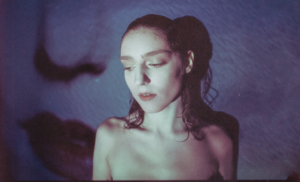
I forgot to ask you earlier, when we talked about the people you worked with and the colour purple. How did the collaboration with your photographer come about?
I came across Thibault on Instagram and I was trying to find people for the album. I saw something that he’d done with Lykke Li and thought the pictures were so beautiful. They’re very modern, but they were still very filmic and grainy and romantic as well. So I got in touch and we did a lot of Zooms together and he was trying to work out what was in my brain which I’m not very good at explaining. He was incredible with the way he drew it out of me and I ended up doing a lot of paintings for him because I just couldn’t explain what it was, so tried to paint it instead. And then I went to Paris to shoot it with him. And the first look we did, I remember just thinking this is not right, this is not it at all. He put me in a wig that was short and had this fringe and I was in a very tight dress and I just thought that it was not me at all. And he said, ok, let’s take the wig off and then and we painted my face with the red and white over the top. So it’s kind of strange, almost like Japanese theatre looking. And then he projected the first picture on top of me. And really what you see on the album cover is the picture with me in the wig behind. And it was so beautiful. I just thought that it looked like me as a child behind in the picture. And then it’s me growing up in front of it. It was so clever, how he picked up the whole idea of the inner child.
That’s amazing. Was that the plan from the beginning or kind of the way the process just happened?
It just happened. I I don’t even think I’d talked much about the inner child thing or not too much about what the record was really about. I had just given him feelings of how it felt overall and he just tuned into it.
You’ve released 5 albums now and Portraits sounds like it marks a new chapter. Is there anything you’re particularly excited about going forward with the release or beyond?
I’m well excited for it to be out. I’m excited to tour the songs and work out how we’re going to do that and how it’s going to look. And we’ve got an album launcher in August. But I don’t know really what the next thing is going to be yet. I haven’t moved into that space yet, so I’m kind of in between. But it’s funny because obviously the record was written and finished last year. So everyone else is just hearing it, but I’m already moving into a new space and I’m excited to see what that will be and to start writing again.










